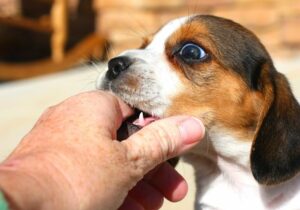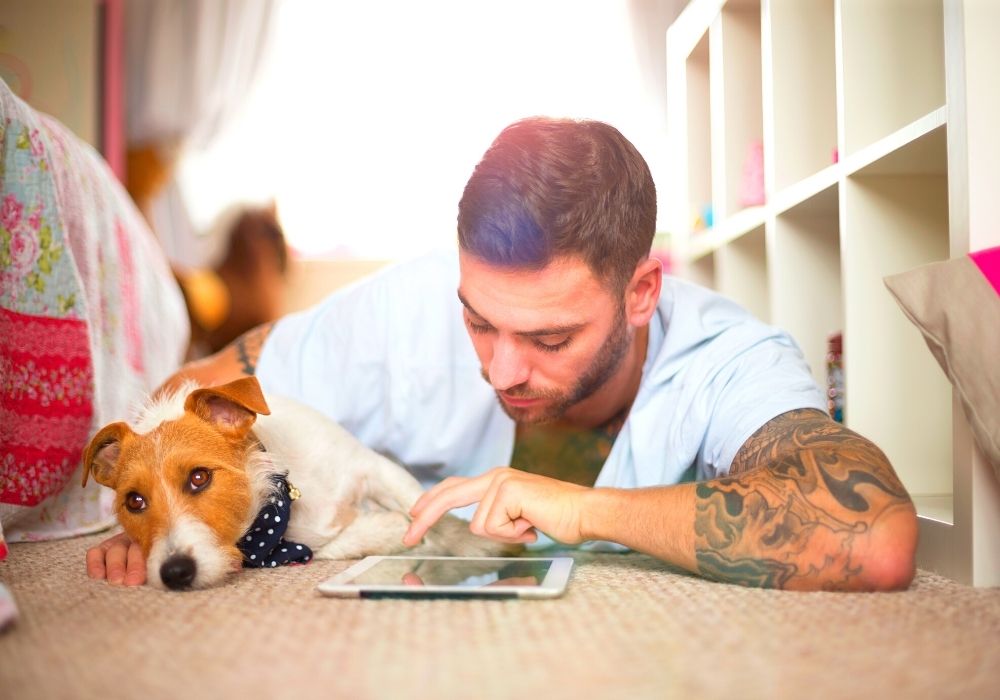Showing your dog enough affection is key to fostering your bond. But are they aware you love them?
In human relationships, words are not enough to convey love. There must be a consistent portrayal of affection – whether big acts or simple gestures. Hence, saying that you genuinely care and showing that you do go hand in hand to get your point across.
In dogs, it’s not entirely different. Although your furry companions can’t decipher the human language, it doesn’t take much effort from you to show them affection. Letting your dogs know that you love them through simple acts is all that they need. It’s not rocket science, but you must be consistent every day.
What Do We Mean by Affection?
There is a difference between affection and attention, which some pet owners may have misconstrued.
Affection is showing your dog you love them, for example, by petting, snuggling, kissing, or simply spending time with them. On the contrary, attention is letting your dog know they are important or interesting. You can show them attention through playing, feeding, walking, and training. Dog training is equally important to nip undesirable behaviors in the bud, especially during puppyhood. Some pet owners use e-collars to assist them in their training, but that’s a different discussion.
You may give your dog the attention they need but fail to show them enough affection (and vice versa). The key is knowing what makes them happy. Additionally, you need to make time to spend with them every day.
Dog Breeds Have Specific Demands for Affection
A study published in the Royal Society Open Science Journal revealed that some dog breeds behave more independently than others. These breeds (Czechoslovakian Wolfdogs) display wolf-like characteristics and do not rely on their human owners to help them solve problems.
On the other hand, Labrador Retrievers have shown more dependence on humans than German Shepherds and Czechoslovakian Wolfdogs in solving puzzles. Labradors resorted to gazing longer at their human owners to ask for help solving the task. This behavior shows a closer relationship with humans and, by extension, the need for more attention and affection.
Like humans, different dogs have different demands for affection. Some dogs may be satisfied with only your loving gazes and treat-giving, while others may need cuddles, kisses, or some form of human touch. So, take the time to observe your dog’s behavior, mainly what makes them happy while wagging their tails.
And if you don’t give them the amount of affection they need, they will either vocalize (barking, howling, etc.) or communicate through their body language. Understanding what your dog is trying to say can be challenging. However, there are signs to look out for to give you an impression.
Behaviors That Show Your Dog Crave Your Affection
- Chewing

Chewing on objects is normal behavior for dogs. For puppies, it can be due to their teething, and it’s their way of relieving the pain. They should be given appropriate chewing toys instead of sacrificing your new shoes at home. For older dogs, it could be a “canine thing” to keep their teeth clean and jaws strong. However, if the chewing behavior has been habitual and, at the same time, destructive, this may be a telltale sign that they are anxious or bored. You can address this behavior by spending more time with them or seeking professional help.
- Vocalizations

Vocalization, like whining and howling, is a way of communication for dogs. It’s typical if they want something from you. Sometimes, a dog whines if they’re anxious. Howling is how they communicate with their packs or to you as their parent, especially if you’re about to leave the house. The key to understanding it is looking back at your past interactions.
Dogs also bark for various reasons. If your dog barks at passing strangers or dogs, it could be due to their territorial instinct being triggered. However, if the barking is directed at you or any of your family, there’s a high chance they want to tell you something. While it’s common knowledge to ignore your dog’s barking to avoid reinforcing the behavior, it’s not always the case. Addressing the issue behind the barking is the right approach you need to take, especially if it’s a medical issue prompting the barking behavior.
- Pawing and Nose-Nudging

Pawing and nose-nudging at you can be simple attention or affection-seeking behavior from your dog. They may just be saying, “Hey, I’m right here. Make time for me, please.”
Otherwise, these behaviors can mean your dog is anxious and wants you to comfort them. Knowing what they want to convey to you depends on how your dog has behaved in the past. Hence, take note of their body language. A relaxed body and tail indicate they want you to notice them, while a tense body and tucked tail can mean they’re anxious about something.
- Play-Biting

Play-biting is natural for dogs, especially puppies. It can be a show of affection from them. It can also be an invitation to play. It can be adorable when they do that. Just ensure your dog has been receiving their shots regularly.
Unfortunately, play-biting could pose a problem if your pet interacts with other people. Your friends may not consider your dog’s play-biting appealing, which may scare them. And although your pup doesn’t intend to bite, this mouthing behavior still puts pressure and could hurt you or your friends.
Play-biting may also encourage problematic behaviors as the dog grows. Hence, it’s good not to reinforce the behavior and redirect it toward their toys.
Ways to Show Your Dog Affection
To reduce, if not eliminate, concerning and bad dog behaviors as those mentioned above, spend time with your dog. You may consider keeping a schedule to shower your dog with your love and affection. Below are some of the ways how to do it:
- Morning cuddles
- Drawing circles with two fingers the size of sand dollars with a pressure of a feather’s touch (this simulates their mother licking off the amniotic fluid when they first were born), the slower the better. It should be about 13 seconds to make a full circle.
- Giving them toys if you’re going away
- Praising them for good behavior
- Focusing on touch (petting, snuggling, kissing, etc.)
- Taking them for a drive
- Afternoon walks or strolls in the park
Some dogs may not need a lot of affection from you, similar to the Czechoslovakian Wolfdogs mentioned earlier. So, pay attention to your pet’s reactions when you are being affectionate. For instance, you might think hugging is what your dog needs, while it’s actually one of their pet peeves. Some dogs may tolerate you hugging them but struggle after a few seconds. Dogs have different affection needs. It’s something pet owners should bear in mind in building better relationships with their fluffy friends.
Bio
Bless works at PetsTEK as a content writer, a Florida-based company specializing in e-collars for dogs. As a dog enthusiast, she is constantly on the lookout for dog rearing tips and training techniques to build a long-lasting bond with her pet.
Love our content? Share it with a friend or link it to social media. Like short clips of cute household pets? Training tips? Follow us on instagram @nydognanny or on YouTube at nydognanny. Have some news you needs to get to dog and cat parents stat? Email info@newyorkdognanny.com with your article pitch.




